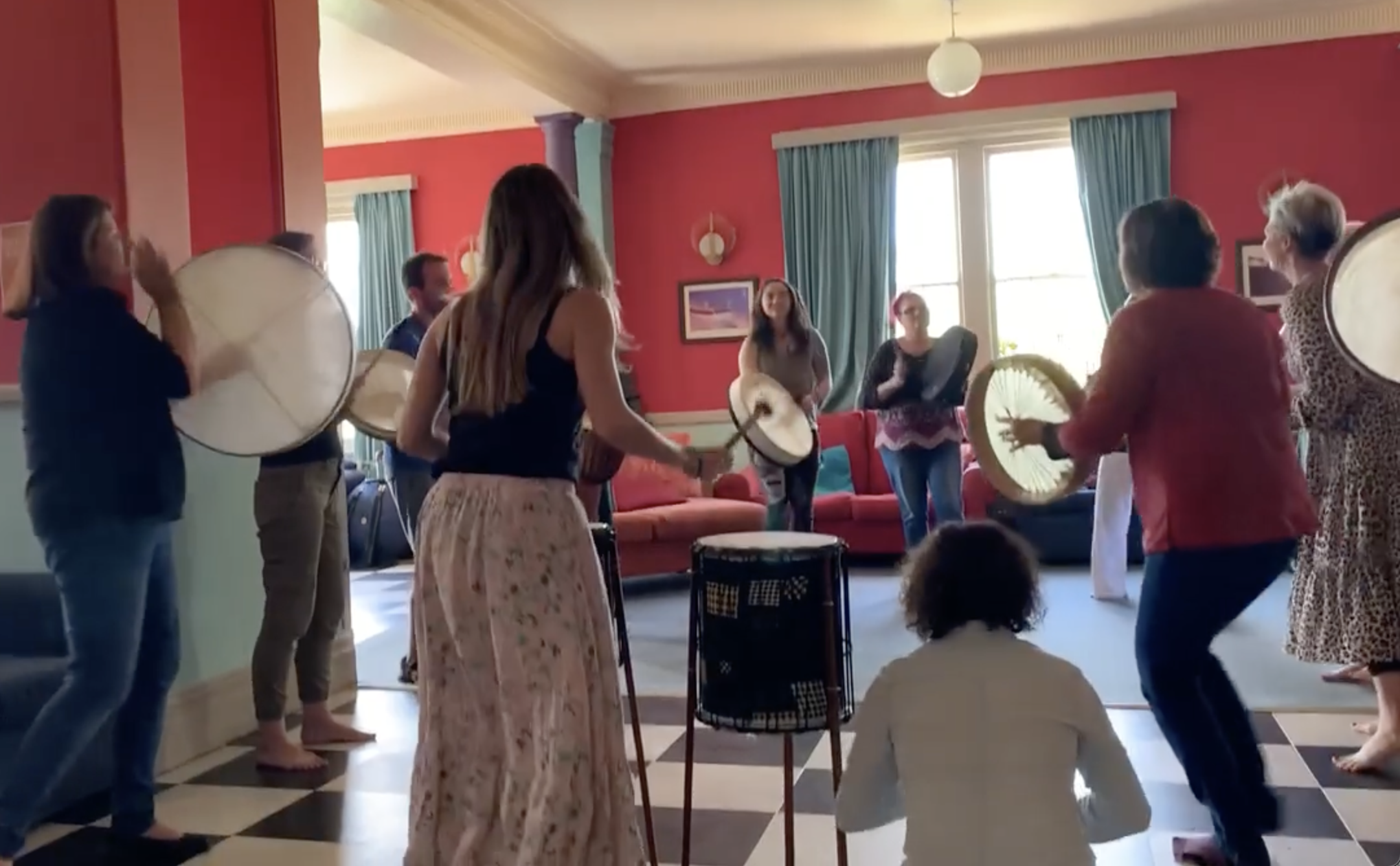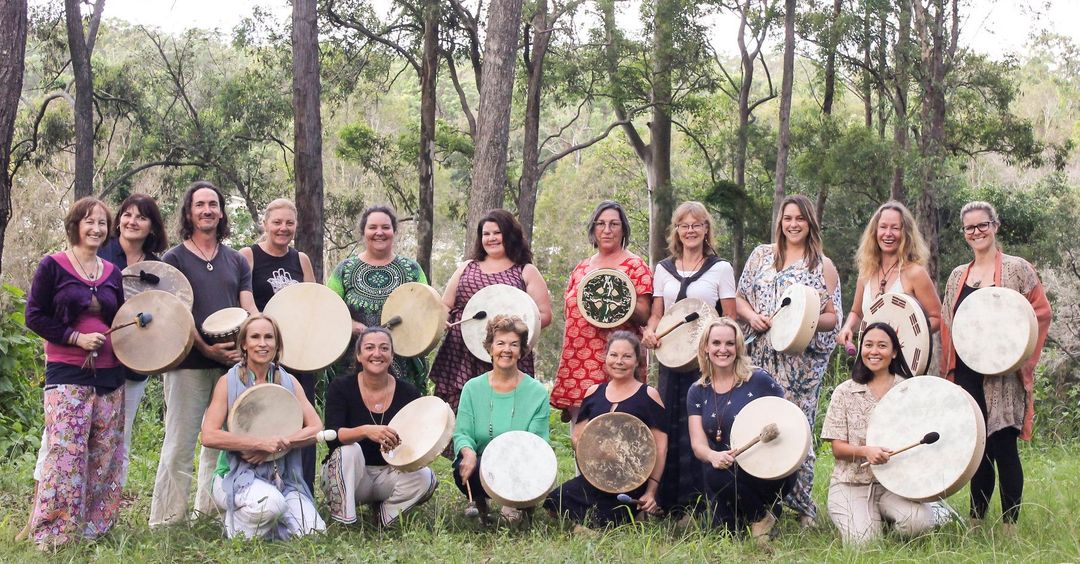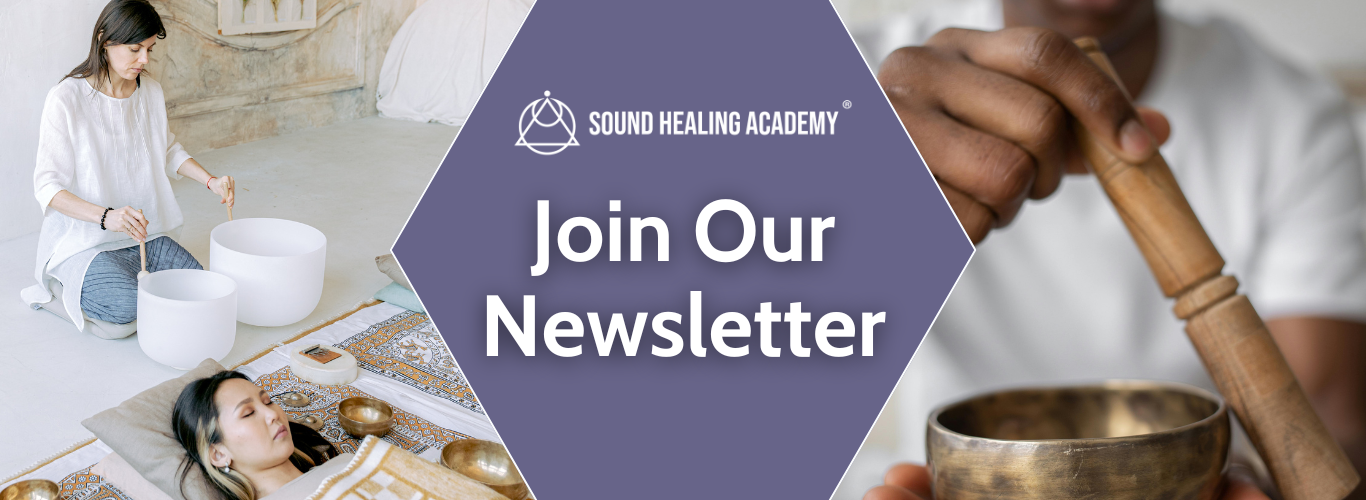Sound Healing Toolkit: Easing Anxiety Through Drumming
Jul 09, 2021
In one of our previous blog called 7 Tibetan Singing Bowl Tips To Reduce Anxiety, Depression & Pain we looked at how sound healing can help with the symptoms of anxiety.
We discovered that anxiety is an emotional response that persists after a stressor has dissipated or, can present as a sense of overwhelm about future perceived stressors that may not happen. We also looked at how sound healing instruments, specifically tuning forks can help the brain entrain into a state of deep relaxation and out of a fight or flight state.
The Frame Drum
Let's look at the powerful frame drum and how it can also reduce symptoms of anxiety in the body. Drumming helps to focus the mind, and through active listening, it brings us into present awareness, allowing your body to heal and recover.
How Drumming Can Help Ease Symptoms Of Anxiety
The potential of music within mental health has been recognised for a long time. When we drum, our bodies release neurochemicals such as dopamine and serotonin, thus creating that feel good factor in our body.
More recently, the Royal College Of Music in London focused on studying the effect of drumming on anxiety and depression. The Centre for Performance Science experimented with more than 50 volunteers, who were suffering of depression or anxiety in a 10-week trial, during which they played the drums in groups of up to 20 for 1 hour a week.
Amongst their other findings, they discovered that group drumming can reduce the symptoms of anxiety by 20%, and that it can make a real difference in people’s lives.

Annie Ridgway - Drum Circle
Our Sound Healing Academy teacher, Annie Ridgway, works with hand-held frame drums (shamanic drums) for self-care plus therapeutic 1-2-1 sessions and in groups with family and friends.
Drumming Workshop - With Annie Ridgway
In Annie's sound healing workshops, she found that: "A shamanic rhythm of 180 beats per minute can incredible reduce anxiety.
Many people go into a trance like state and any stress that is hidden in the subconscious can rise to the surface in the form of release (seen as twitches in the body and emotional release such as tears.). The effect is so powerful that the release calms anxiety."
Using this drum rhythm is a very powerful tool for our brain health, because by the very nature of its constant rhythm, it permeates the entire brain, bringing both hemispheres into rhythmic balance.
Morag Wylie - Sound Healing Academy Tutor
How To Create A Healing Response With The Drum
First and foremost, enjoy your journey with your drum. Play using your intuition and connect with the sound, vibration and rhythm that is beyond the physical.
Let go of any stress or tension in the body or energy centres, and slowly start to play the drum as you feel the sounds, vibrations, and rhythms that the drum wishes to bring forth.
Slow solo rhythmic playing of your drum can also access deep states of healing and calm.
We asked our teacher Morag Wylie, to tell us some simple steps to help us create this calm within and reduce symptoms of anxiety.
She tells us that an excellent way to calm your body is to drum a simple heartbeat rhythm of around 70 beats per minute.
"Start where you are (take your pulse) beating a steady rhythm, then gradually slow it down to 70 beats per minute or even 60 beats per minute. Use a soft beater and a gentle, steady beat. You’ll find your heartbeat and mental chatter will calm as your brainwaves also slow down, easing anxiety in the body"
Sound Healing Academy Tutor - Hanna Brabbs
So pick up your drum and connect with your heart today!
What to read next:
Do you want to learn more about the healing powers of the drum?
Join one of our Online Rhythm & Drums Courses or In-Person Training Courses!
Join Our Sound Healing Newsletter
Be the first to hear about upcoming events, workshops, and exclusive offers on instruments and training.
Unlock a world of free resources, inspiring sound healing courses, and more!
SPAM is a NO-NO! We will never sell your information, for any reason.










